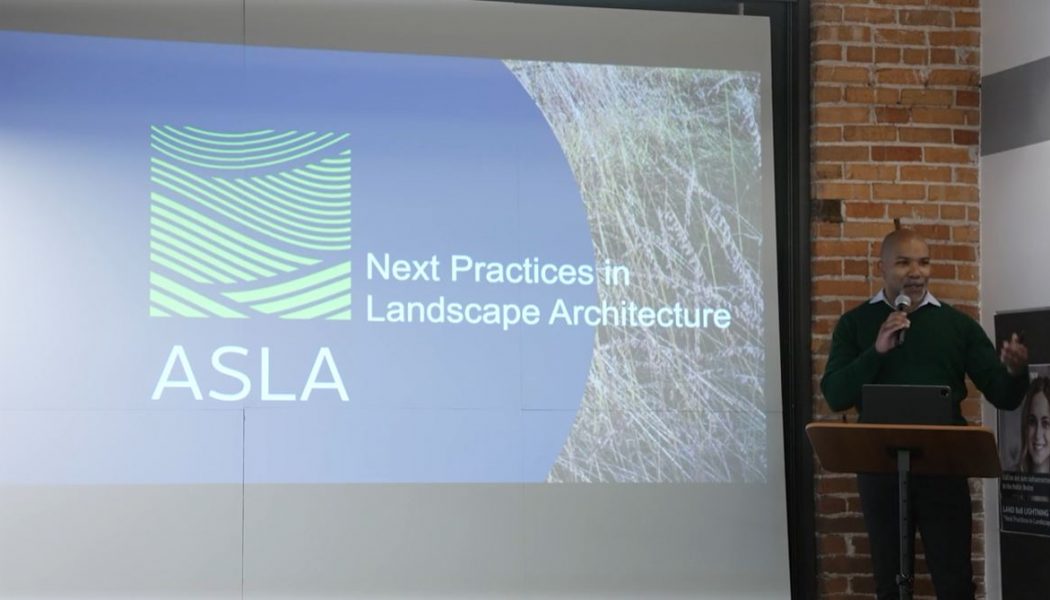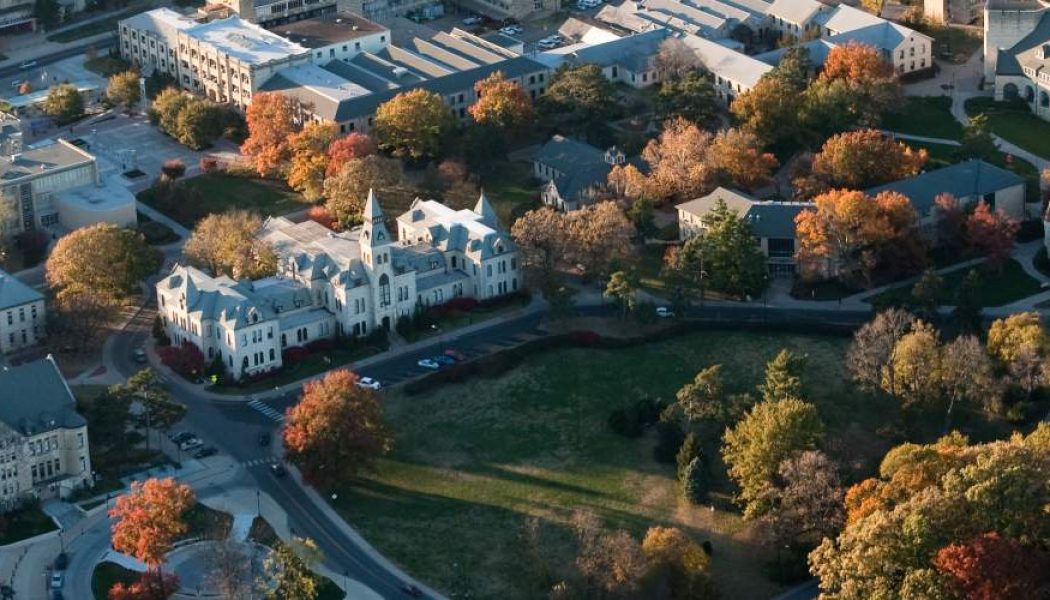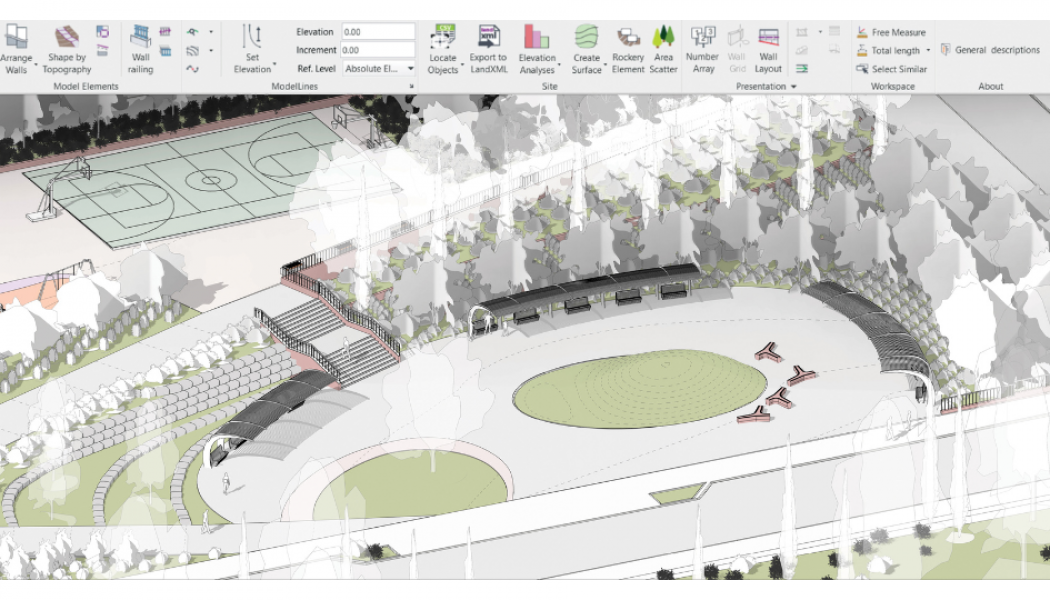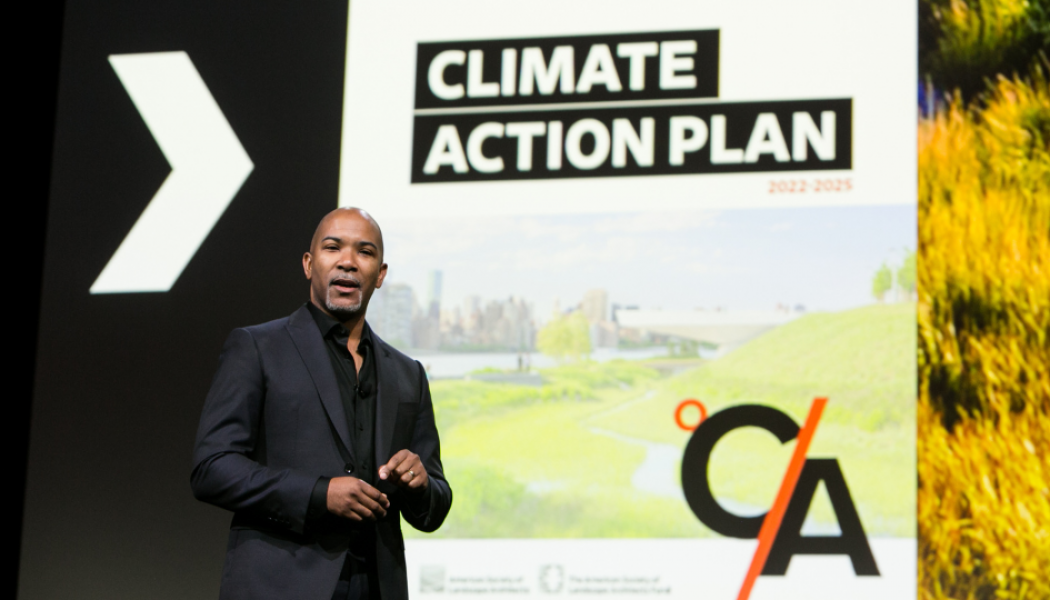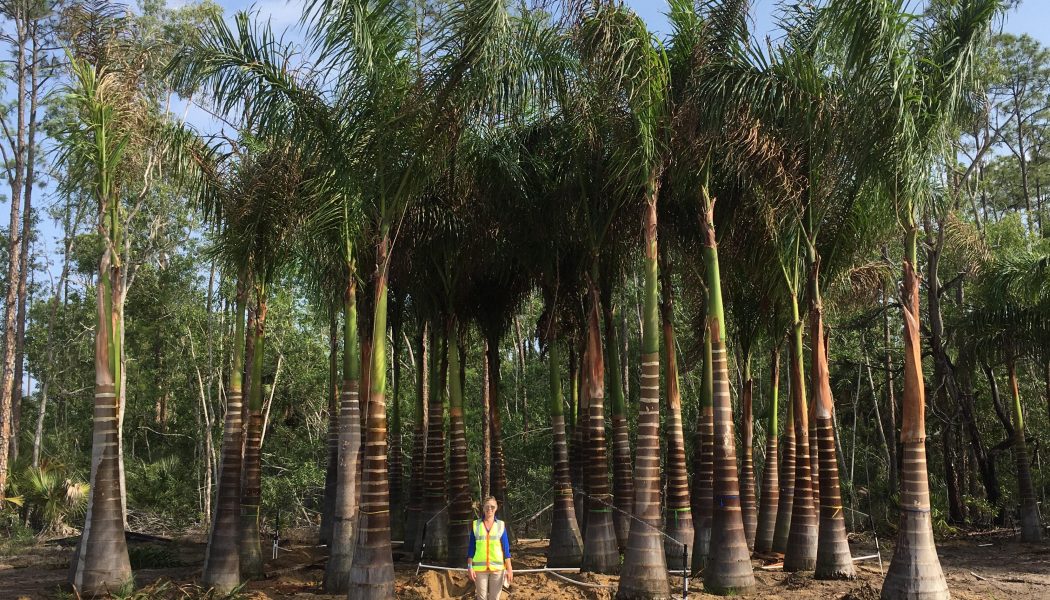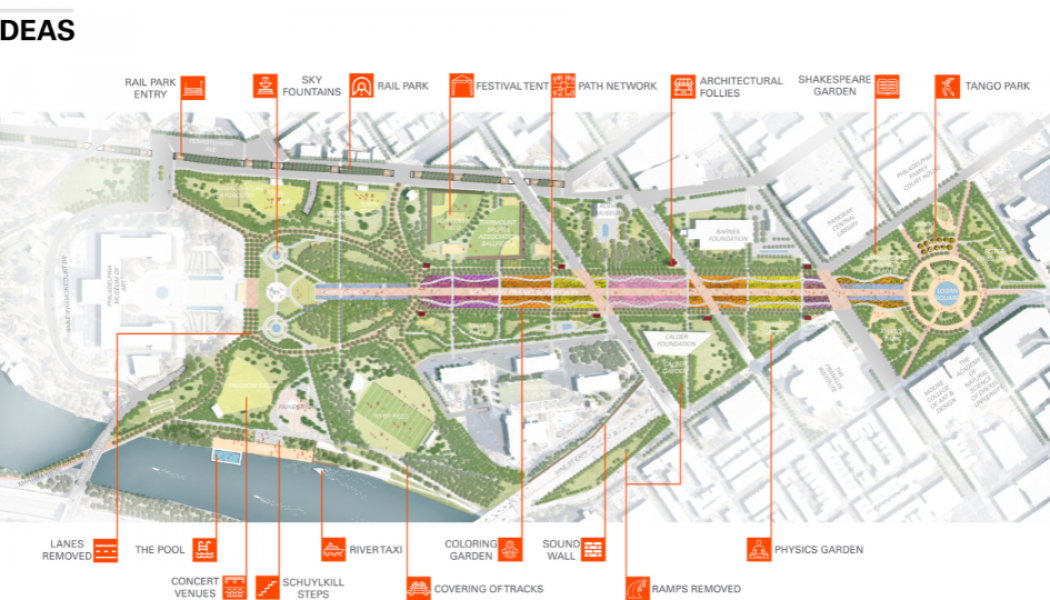Featured
Posts to be featured on the Main Page.
Shifting Paradigms: Collaboration in Practice [Video]
At the Land8x8 Lightning Talks in Denver, CO, Founder + Principal of Studio Siembra, Magdalena (Maggie) Aravena, offered insight into how the practice of landscape architecture can be transformed by new models of collaboration. A first-generation Chilean, her service and practice have always revolved around people. “Siembra,” her firm name, stems from the Spanish word “to sow” – “Sowing seeds of optimism, resilience, and beauty is what we’re doing, or what we should be doing with practice.” Recognized as ASLA’s 2021 recipient of the Emerging Professional Medal, Magdalena is an admired professional within the Landscape Architecture community. With seven years of previous landscape architecture experience, Maggie knew there was potential to think outside of the box when it came to the futur...Read More
Landscape Architecture + Climate Action [Video]
During the Land8x8 Lightning Talks in Denver, Torey Carter-Conneen, the CEO of the American Society of Landscape Architects (ASLA), joined seven other speakers to kick-off this set of talks centered around the theme, “Next Practices in Landscape Architecture”. He began with a question that landscape architects get asked regularly while interacting with the public: “What is Landscape Architecture?” As the leader of the largest national membership organization for landscape architects, Torey routinely introduces the profession to people who may or may not know what landscape architecture is. Simply put, landscape architects utilize a unique combination of skills: design, art, and science, according to Torey. From the intentionality of pathway materials, spacing of trees, or the direction of ...Read More
6 Reasons to Attend LABash 2023 at Kansas State University
01. The Lineup of Events 24 education sessions 6 spark talks 4 keynotes + a watercolor workshop a sketch crawl a field visit to the Konza Prairie With a focus on trailblazing topics, this year’s LABash Conference has an impressive lineup of speakers with several special events that you won’t want to miss. A guided tour of the Konza Prairie Biological Station will give a behind the scenes look at prairie conservation and management within the Flint Hills tallgrass preserve. A watercolor workshop led by K-State Assistant Professor Otto Chankyakorn will inspire attendees to apply themselves in new ways and learn techniques for watercolor painting. Featuring topics in public engagement, digital tools, landscape performance, climate action, and many others, the LABash 2023 schedule provi...Read More
Social Media Awards in Landscape Architecture 2022 – Winners!
Here are the winners of the 5th Annual Social Media Awards in Landscape Architecture presented by Land8 and the American Society of Landscape Architects! Social media has the power to significantly increase the awareness and importance of the profession of landscape architecture, and Land8 and ASLA believe industry leaders in social media should be recognized and promoted. Be sure to follow the winners to help grow and promote the profession! Top 10 Social Media Accounts – LANDSCAPE ARCHITECTURE FIRMS 1. TBG Partners – Instagram At TBG, we use our Instagram to promote the practice of landscape architecture by sharing a behind the scenes look at our design process. With a mix of hand-drawings, diagrams, renderings, and built photos, we believe it’s important to showcase each phase of our wo...Read More
Get on the BIM Wagon Now or Forever Remain a Bystander
Sponsored Post Get on the BIM Wagon Now, or Forever Remain a Bystander Environment for Revit®, unlocking the power of BIM for landscape architecture. By Nehama Shechter-Baraban and Oren Ben-Ner For no fault of their own, landscape architects have been slow to adopt the Building Information Modeling (BIM) approach to project design. Consequently, in an AEC industry where BIM is the norm, landscape architecture isn’t given the place or significance it deserves, resulting not only in greater expense and delays, but in poorer design and execution outcomes. Environment for Revit® has removed the obstacles to transitioning to BIM, creating an unparalleled BIM for landscape architecture experience. Sitting on the BIM fence is now a matter of choice, and we would do best to choose otherwise. Let’s...Read More
LAF Launches New BIPOC Scholarship, Internship, Mentorship Program
On January 6, the Landscape Architecture Foundation (LAF) announced LAF Ignite, a transformative new program that promises to have long-lasting impacts on the landscape architecture discipline and the communities we serve. LAF Ignite is a comprehensive scholarship-internship-mentorship program created to help BIPOC landscape architecture students overcome barriers to staying in school, graduating, and entering practice. Student participants receive an annual $10,000 scholarship, paid summer internships, and three types of mentorships throughout their academic journey. The program is the result of a concerted, years-long effort by LAF, a dedicated group of stakeholders, and more than 100 donors to accelerate the pace and scale at which the discipline takes action to address underrepresentat...Read More
Climate Action Plan Published for Landscape Architects
In the same week that the Nature-Based Solutions Roadmap was announced by the U.S. Federal Government, the American Society of Landscape Architects (ASLA) released its official Climate Action Plan. This document provides a roadmap for how the organization can achieve zero emissions by 2040, partnered with a companion field guide, listing tools for landscape architecture firms, organizations, and designers to follow suit. Seeds of hope, sown long ago, are sprouting. Landscape architects are systems designers who plan and design with living soils, water, plants, trees, and people – with life. Landscape Architects acknowledge that the climate and biodiversity crises are interconnected challenges of our time. Acting with the tools we know how, landscape architects are uniquely positioned to se...Read More
Getting What You Want: Considerations in Specifying Plants
Mastering plants as a design material is a life-long challenge. Learn the names, qualities, and ecological preferences of any of the hundreds of potential species you could use and – guess what? – you’re only halfway there. As a landscape architect, you probably won’t have direct control over the plants that go into your project – instead you create instructions (a plan, a plant list, maybe some notes) that will enable someone else to build the landscape and achieve the outcomes that you have envisioned. The better you get at creating those instructions, the more likely you are to end up with design outcomes that match your intent. I’m going to introduce you to the basics of how we think about specifying plants at Coastal Vista Design, as well as some of the common issue...Read More
The Up Side of No-Mow Landscapes
America has an obsession with lush, green manicured lawns. Thomas Jefferson introduced lawns to Monticello after spending five years abroad and taking note of the large, neatly groomed, green swaths at various estates, such as Versailles. At that time, lawns became a symbol of stateliness and wealth due to the demand of resources required for upkeep. Lawns did not become a homesite fixture to the middle class until well after the Civil War. Fredrick Law Olmstead’s public park movement is partially credited with the explosion of lawns into suburban America. Many of the first east coast master planned communities were modeled after parks with shared and individual green spaces. The federal housing boom after World War II further propelled lawns into the mainstream. Homes were built away from...Read More
The Road to Reimagine Benjamin Franklin Parkway: Creating a People-Centric Parkway
By Corey Dodd and Tarana Hafiz In the fall of 2021, the City of Philadelphia embarked on a project to Reimagine Benjamin Franklin Parkway. Along with other iconic, historic cities around the world, Philadelphia is following suit with reinvestment in the public realm, featuring a more pedestrian-friendly approach to the historic corridor. Today the Parkway serves as the city’s hub for cultural institutions, a venue for large- and small-scale events, a destination for exercise, play, and social activities, and as a promenade for peaceful civic demonstration. A goal of the project includes honoring the historic design intent of the Parkway which stems from the City Beautiful Movement that claimed design could not be separated from social issues and should help facilitate civic pride and engag...Read More
Giving Back [Video]
Anchalee (Annie) Phaosawasdi of Hargreaves Jones used the platform of the Land8x8 Lightning Talks to share her experiences giving back to her community as a landscape architect and challenges the profession to create time to do so as well. While most of the projects that landscape architects serve their communities and neighborhoods, they are not always as rewarding as the larger-scale projects that are “saving the planet” or projects that are immediately rewarding. Annie shares ways that she and her colleagues engage the community to give back and increase awareness and diversity of the profession. One such program was Gear-Up by the New York Botanical Garden that targets high school and first year college students to learn about the environment, program and projects of the Bo...Read More
Olmsted Scholars Deliver Inspiration, Big Ideas for the Future
Every year, the Landscape Architecture Foundation (LAF) welcomes nearly 100 up-and-coming students into our LAF Olmsted Scholars Program – an initiative designed to grow and support the next generation of landscape architects. This month, we inducted 89 new Scholars from accredited college landscape architecture programs across the U.S. and Canada into the program, including two National Olmsted Scholars and six finalists. To say these Scholars are inspiring would be an understatement. The 2022 graduate LAF National Olmsted Scholar is Katie Finnigan, from the University of Colorado Denver. Katie plans to use her $25,000 award to undertake community-engaged research on design interventions that can create acoustically and sensorially supportive outdoor environments for neurodivergent popula...Read More





